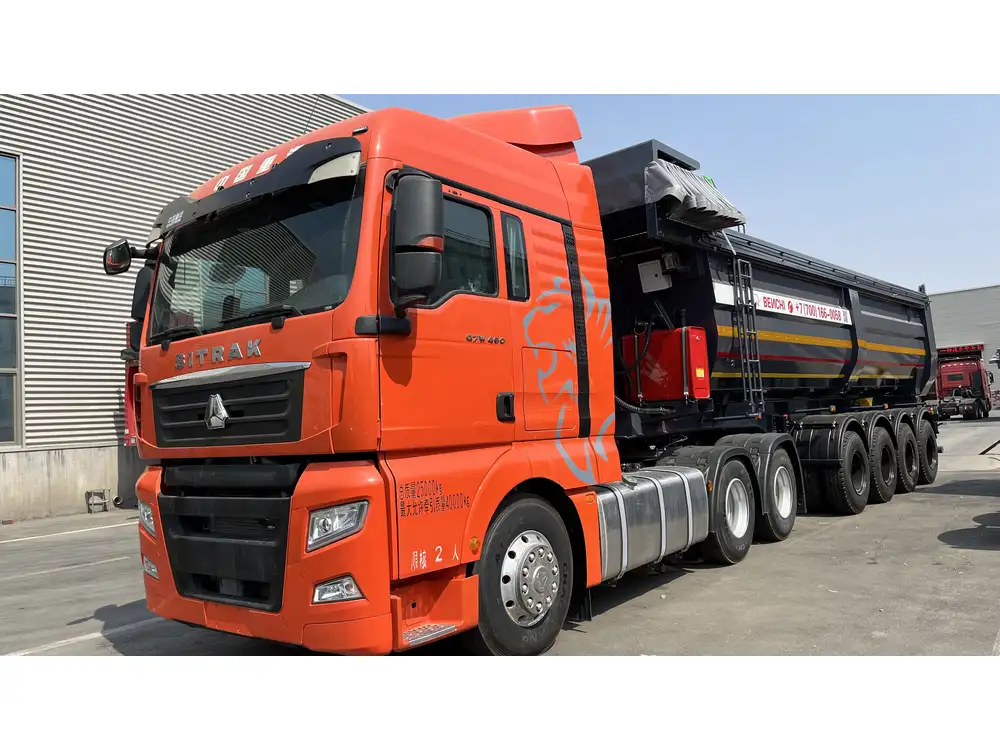When it comes to transporting cattle, understanding capacity is essential for both safety and efficiency. This crucial knowledge can help farmers, transporters, and suppliers optimize their logistics while ensuring the well-being of the livestock. In this article, we delve into the intricacies of loading cows into semi-trailers, from dimensions to regulations, and provide a detailed overview of best practices to maximize your hauling capabilities.
Understanding Semi-Trailer Capacity
Dimensions of Standard Semi-Trailers
Semi-trailers are often categorized based on size. Most common types used for cattle transport are 48-foot and 53-foot trailers. Here’s a breakdown of their key dimensions:
| Trailer Size | Length (feet) | Width (feet) | Height (feet) | Approx. Volume (cubic feet) |
|---|---|---|---|---|
| 48-foot | 48 | 8 | 13.5 | 4,032 |
| 53-foot | 53 | 8 | 13.5 | 4,608 |
Considering the internal dimensions is crucial. Trailers designed for cattle typically have modified interiors to accommodate animal transport, including:
- Non-slip flooring for safety
- Ventilation systems to ensure fresh air
- Tie-downs and dividers to secure animals during transit

Determining Cow Size and Weight
Next, let’s examine the average dimensions and weight of cattle. A full-grown cow typically measures around 5 to 6 feet in height and weighs anywhere between 1,000 to 1,800 pounds, depending on the breed. Here’s a comparative analysis of various breeds:
| Cow Breed | Average Weight (pounds) | Average Height (feet) |
|---|---|---|
| Angus | 1,200 – 1,800 | 4.5 – 6 |
| Holstein | 1,300 – 2,000 | 4.5 – 5.5 |
| Hereford | 1,200 – 1,600 | 4.5 – 5.5 |
| Jersey | 800 – 1,200 | 4 – 5 |
Understanding these averages is essential for transporters. Knowing the size and weight of your herd enables you to calculate how many cows can safely fit into your semi-trailer.
Calculating Cow Capacity in a Semi-Trailer
General Guidelines for Loading Cattle
Cattle require adequate space for comfort and safety during transportation. American norms suggest allowing approximately 10 to 14 square feet per cow during transit.
Calculating the capacity involves a straightforward formula. Here’s a simplified equation:
- Calculate the usable floor space of the trailer.
- Determine how much space each cow requires.
- Divide the available space by the space needed per cow.

Example Calculation for a 48-foot Trailer
- Usable Floor Space: A standard 48-foot trailer has a width of 8 feet.
- Total area: (48 \, \text{ft} \times 8 \, \text{ft} = 384 \, \text{ft}^2)
- Space per Cow: Let’s use 12 square feet as a comfortable space allowance.
Now, dividing the total area by the space needed per cow gives us:
[ \text{Number of cows} = \frac{384}{12} = 32 \, \text{cows} ]Example Calculation for a 53-foot Trailer
Using the same method:
- Usable Floor Space: (53 \, \text{ft} \times 8 \, \text{ft} = 424 \, \text{ft}^2)
Calculating for 12 square feet per cow: [ \text{Number of cows} = \frac{424}{12} \approx 35 \, \text{cows} ]
Factors Influencing Capacity
- Size of Individual Cows: Larger breeds require more space and will thus lower the total capacity.
- Loading Configurations: Some trailers allow for adjustable partitions which lead to more efficient space usage depending on herd sizes.
- Weight Distribution: Proper loading is fundamental to maintaining vehicle balance, which can be affected by the weights of cows loaded towards one end of the trailer.

Regulatory Considerations
Navigating livestock transport regulations is vital for ethical and legal compliance. The following standards should be observed:
APHIS Regulations: The Animal and Plant Health Inspection Service outlines the conditions under which cattle must be transported. Ensure compliance with guidelines on space and welfare.
State Laws: Various states have differing regulations regarding the transportation of livestock. It’s important to consult local laws to avoid fines or penalties.
Best Practices for Loading and Unloading: Maintaining animal safety is paramount; therefore, adopting best practices during loading and unloading, such as using proper ramps and minimizing stress, is indispensable.
Best Practices for Transporting Cattle
Pre-Transport Preparation
- Health Checks: Make sure all cows are healthy and fit for transport. Veterinary checks can help prevent disease spread.
- Sufficient Water: Cattle should be well-hydrated before transport, as dehydration can lead to serious health issues.

During Transport
- Ventilation: Ensure that there is adequate airflow throughout the journey to maintain a comfortable temperature and provide oxygen.
- Minimal Bumping: Opt for smooth driving routes and avoid rapid acceleration, sharp turns, and sudden braking.
- Regular Stops: Take breaks at intervals to allow cows to rest and rehydrate.
Post-Transport Considerations
- Check for Injuries: Once unloaded, inspect cows for any injuries or stress-related issues.
- Recovery Time: Allow animals some downtime to adjust post-transport before moving them to new environments.
Conclusion
Understanding how many cows can fit in a semi-trailer hinges on several factors, including trailer dimensions, cow size, regulatory standards, and best practices in transportation. By meticulously calculating the usable space in trailers and considering the welfare of the livestock during transit, transporters can ensure a successful, safe, and efficient journey. Awareness of these details not only facilitates effective logistics but fosters responsible animal husbandry, underlining our commitment to the ethical treatment of livestock.
This comprehensive guide equips you with essential insights into maximizing your cattle transport capabilities, ensuring that you remain compliant with regulations while optimizing the welfare of the cows entrusted to your care. As the industry continues to evolve, engaging with these best practices will solidify your reputation as a leading manufacturer and transporter of semi-trailers in the agricultural sector.



